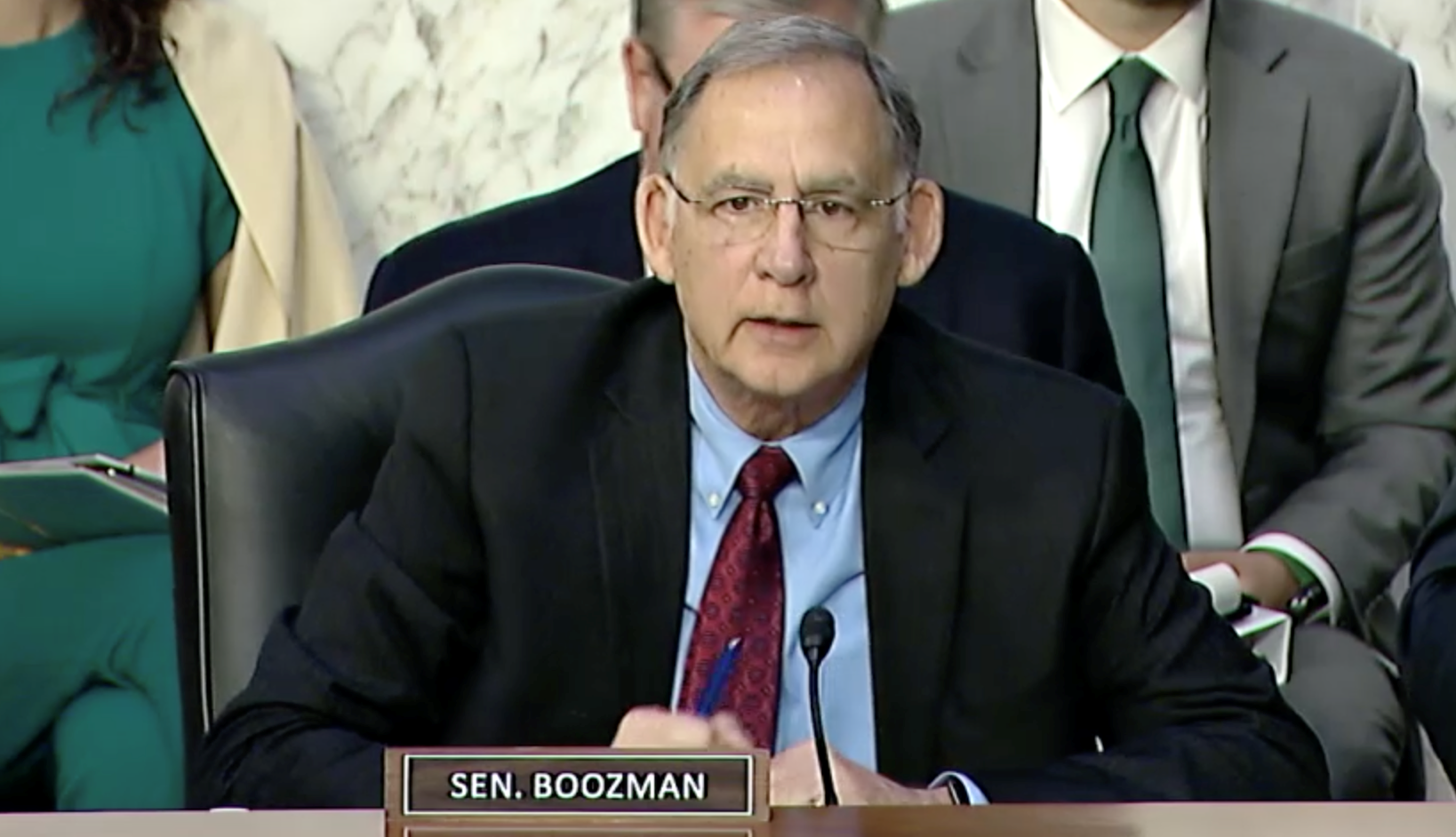Ranking Member Boozman Opening Statement at Hearing on Opportunities and Challenges Facing Farmers, Families, and Rural Communities
WASHINGTON— U.S. Senator John Boozman (R-AR), ranking member of the U.S. Senate Committee on Agriculture, Nutrition, and Forestry, released the following opening remarks, as prepared, from the hearing titled “Opportunities and Challenges Facing Farmers, Families, and Rural Communities”:

Click here to watch Boozman deliver his opening statement
Good morning. I thank Chairwoman Stabenow for holding today’s hearing. I am especially glad to welcome Secretary Vilsack back to the committee. This is the first oversight hearing we have had with Secretary Vilsack since he returned to USDA under President Biden 15 months ago.
Before I turn to today’s hearing, I would like to congratulate the Chairwoman for hosting a very successful field hearing in April on the campus of Michigan State University. This was the kickoff to the 2023 Farm Bill process. I enjoyed learning more about the issues that are important to Michigan’s agricultural producers and rural communities. I share many of the goals for our next Farm Bill that were highlighted by the witnesses.
I am delighted that the Chairwoman will be joining me in Arkansas next month for our second field hearing. The Committee will formally notice the hearing later today, but I am pleased to share with the committee that we will be holding our next field hearing in Jonesboro on June 17th. I am excited to share the views of Arkansas’ hard-working farm families with the Chairwoman and my colleagues on the committee.
This is an unprecedented time for agriculture. As we come out of a global pandemic, we confront a war in the breadbasket of Europe, which has choked off a sizeable portion of the world’s grain and oilseed production. Global food insecurity has become acute. My good friend David Beasley, the head of the World Food Program, recently told me he is now faced with the decision to take food from hungry people in order to give it to starving people. While U.S. producers are willing to help fill the gap, our farmers and ranchers face declining farm incomes and steeply higher input costs. Since January 2021: farm machinery is up 24 percent, if you can find it; grains used for animal feed are up as much as 30 percent; farm diesel fuel is up 122 percent; natural gas is up more than 230 percent; anhydrous ammonia fertilizer is up more than 220 percent, and land prices are up sharply. Several months ago, when USDA provided their first farm financial outlook, production costs were projected at a record $412 billion, while inflation-adjusted net farm income was expected to decline by nearly $10 billion. That was months ago. The situation is likely more dire today.
And it is not just farmers and ranchers who are facing headwinds. Since January 2021, inflation in Arkansas has reached nearly 12 percent. In April, Arkansas families paid $50 more per month to put food on the table, $42 more per month to keep a roof over their head, and hundreds of dollars more on transportation. Inaction on inflation is costing the average Arkansas family $5,400 more per year in living expenses compared to before this administration took office. In fact, this is the highest overall inflation of any President since Jimmy Carter, and inflation hits our low-income and rural communities the hardest.
USDA can play a constructive role to help American farmers and ranchers meet the challenges both here at home and globally. I applaud the nomination of Alexis Taylor to serve as the Under Secretary of Agriculture for Trade and Foreign Agricultural Affairs. America desperately needs someone laser-focused on working with our partners and competitors across the globe for the benefit of U.S. agriculture at this critical moment. I would encourage USDA to stretch itself and its fellow agencies to make the tough decisions necessary that will help bring down food prices and enhance global food security. Food prices will decrease when the costs from the farm to the fork go down. The answer is more supply. More oil and gas development for lower energy prices, more participation in the labor market, more land in production, and more certainty for our farmers and ranchers. Until the administration starts to focus on the core issues that are driving record food costs, there will be no relief and American families will continue to suffer. I will keep making that case to this administration and my Democratic colleagues and encourage them to work with us to help create an environment where those factors start trending in the right direction and prices come down.
I appreciate the announcement USDA made this morning that will allow some additional flexibilities for those with expiring CRP contracts. I believe you can do more. One suggestion is to look to the past. In the 2014 Farm Bill, landowners enrolled in the Conservation Reserve Program were given an opportunity to end their contracts early without penalty. We should give serious consideration to this penalty-free incentive again until grain production returns to normal. I believe this flexibility would allow potentially millions of acres to return to food production. The world cannot afford for prime farmland to lie fallow. Second, and this is more focused on the EPA than USDA, I believe there should be a two year pause on any regulatory changes to currently approved crop protection tools. Producers need the regulatory predictability to plan for the future and the companies that produce these inputs need the regulatory certainty to bring these tools to market. American agriculture can meet this unprecedented moment—the federal government should ensure it is not in the way.
Madam Chairwoman, that concludes my statement. I look forward to hearing from Secretary Vilsack.